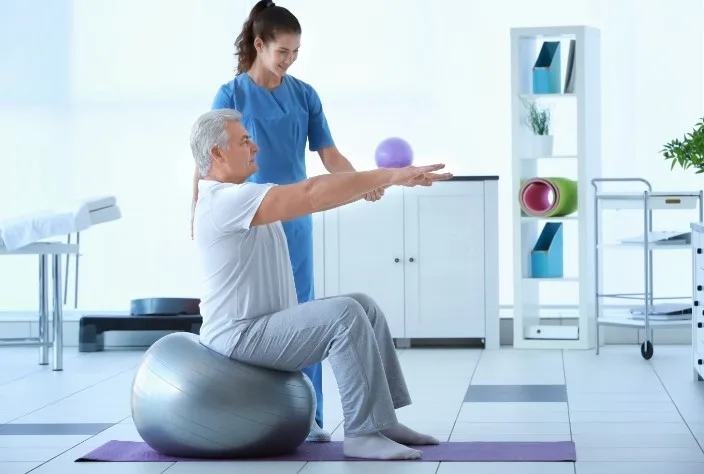In the grand symphony of human health and wellness, each note plays a crucial role, harmonizing to create a melody of strength, resilience, and vitality. Amidst this composition, the power of pressure—both physical and metaphorical—emerges as a profound conductor, guiding the body towards remarkable feats of endurance, recovery, and adaptability. This exploration delves into the myriad ways in which pressure, when applied judiciously and understood deeply, can unlock the secrets to body resilience, transforming challenges into opportunities for growth.
A Firm Foundation: The Role of Physiotherapy
At the core of harnessing the power of pressure lies the science and art of physiotherapy, a field dedicated to enhancing and restoring movement and function. Physiotherapists, like those you might find at a clinic in physio Burwood East, employ a range of pressure-based techniques, from massage to manual therapy, to mobilize joints, alleviate pain, and strengthen muscles. This targeted application of pressure not only addresses specific injuries but also fortifies the body’s natural resilience, teaching it to adapt and thrive in the face of physical challenges.
The Dynamics of Pressure: Stress and Adaptation
The human body’s relationship with pressure is a dynamic dance of stress and adaptation. On one hand, physical pressure through exercise challenges the body, creating micro-tears in muscle fibers that, when healed, result in stronger, more resilient muscle tissue. On the other hand, the psychological pressure of facing and overcoming physical challenges fosters mental toughness and confidence. This balance between physical stress and psychological resilience underscores the body’s incredible ability to adapt, grow, and thrive under pressure.
The Touch of Healing: Manual Therapy and Massage
Manual therapy and massage represent the tactile essence of pressure’s healing power. Through skilled manipulation, these therapies apply pressure to soft tissues, promoting blood flow, reducing inflammation, and releasing tension. This not only accelerates the body’s natural healing processes but also creates a sense of relaxation and well-being, highlighting the interconnectedness of physical and emotional health.
Pressure Points: Acupressure and Reflexology
Borrowing from ancient traditions, modern wellness practices like acupressure and reflexology utilize specific pressure points on the body to unlock health benefits. These techniques, based on the principle of energy pathways or meridians, apply pressure to areas linked to various organs and systems. By stimulating these points, practitioners can influence the body’s energy flow, alleviating conditions ranging from headaches to digestive issues, and enhancing overall resilience.
The Science of Stretching: Flexibility and Pressure
Stretching, an often-overlooked aspect of physical wellness, is intimately connected to the concept of pressure. Through the gentle but firm application of pressure, stretching elongates muscle fibers, enhancing flexibility and range of motion. This not only prevents injuries by making the body more adaptable to physical stress but also contributes to improved posture and performance, showcasing the multifaceted benefits of embracing pressure.
Breathing Under Pressure: The Power of Respiratory Techniques
Respiratory techniques offer a unique perspective on the power of pressure, harnessing the force of breath to influence physical and mental states. Practices such as deep breathing and pranayama apply internal pressure, engaging the diaphragm and activating the parasympathetic nervous system. This process reduces stress, lowers blood pressure, and enhances mental clarity, demonstrating how controlled pressure can lead to profound relaxation and resilience.
Building Resistance: The Role of Resistance Training
Resistance training embodies the physical manifestation of pressure’s potential, using external forces to challenge and strengthen the body. Whether through weights, bands, or bodyweight exercises, this form of training applies pressure to muscles, stimulating growth and fortifying the body’s defenses against injury. The progressive nature of resistance training ensures that the body continues to adapt, becoming stronger and more resilient over time.
Beyond the physical realm, the concept of pressure extends to the challenges and stressors of daily life. Building emotional resilience, much like strengthening muscles, involves facing pressures, learning from them, and emerging stronger. Strategies such as mindfulness, stress management techniques, and cultivating a positive outlook play a crucial role in transforming the pressures of life into stepping stones for personal growth and resilience.
Embracing the Pressure
The journey towards body resilience, guided by the power of pressure, is both a personal and universal one, reflecting the body’s innate capacity for adaptation and growth. Through a combination of physiotherapy, exercise, mindful practices, and a holistic understanding of health, individuals can unlock the secrets to a resilient body and a resilient life. In embracing the pressures we face, both physical and psychological, we open the door to a world of strength, health, and endless potential, proving that within the heart of pressure lies the seed of resilience, waiting to bloom.





